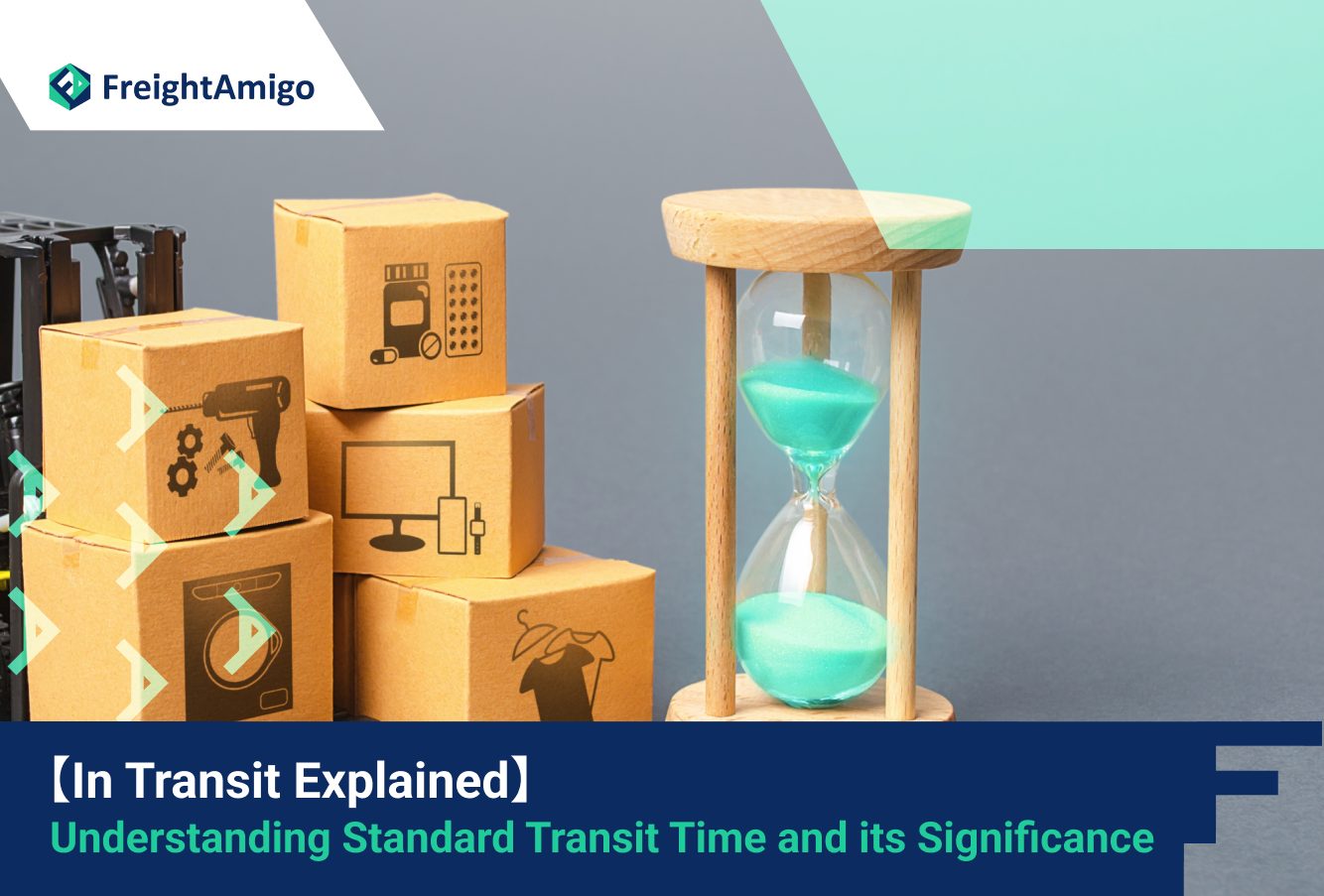Author Name: Tiffany Lee – Marketing Analyst at FreightAmigo
Introduction to In Transit
When you order a package online or send a shipment, you may come across the term “in transit” during the tracking process. But what does “in transit” mean exactly? In this article, we will delve into the meaning of this term and explore its significance in the shipping and logistics industry.
Want To Compare The Best Express, Air Freight, Sea Freight, Rail Freight & Trucking Rates So As To Have Better Control On Cost?
What Does “In Transit” Mean?
“In transit” refers to the period when a package or shipment is in the process of being transported from the point of origin to its final destination. It signifies that the package is currently on the move and is being handled by the shipping carrier or courier service.
During this phase, the package is typically in a state of transition, moving through various transportation modes such as trucks, planes, or ships, depending on the distance and shipping method chosen. The duration of the transit period varies depending on several factors, including the shipping method, distance, and any unforeseen circumstances that may arise along the way.
Understanding what “in transit” means is crucial for both the sender and the recipient of the package. It provides them with valuable information about the progress of the shipment and allows them to anticipate its estimated arrival time.
Importance of Understanding Transit Time
Having a clear understanding of transit time is essential for various reasons. Firstly, it allows the sender to determine the most suitable shipping method based on the urgency of the delivery. For time-sensitive shipments, expedited shipping options may be chosen to ensure prompt delivery, whereas for non-urgent items, standard shipping methods can be selected to reduce costs.
Secondly, understanding transit time helps the recipient to plan accordingly and be prepared for the arrival of the package. Whether it’s scheduling someone to receive the package or making arrangements to pick it up from a designated location, knowing when the package is expected to arrive ensures a smooth and hassle-free delivery process.
Furthermore, businesses heavily rely on efficient transit times to maintain customer satisfaction. Delays in transit can lead to frustrated customers and potential negative reviews or feedback. Therefore, understanding transit time becomes vital for businesses to meet customer expectations and uphold their reputation.
Factors That Affect Transit Time
Several factors come into play when determining the transit time of a package. By understanding these factors, both senders and recipients can gain insights into the estimated delivery timeframe and potential delays that may occur.
- Distance: The distance between the origin and destination is a significant factor in transit time. Longer distances typically require more time for transportation, especially when crossing borders or continents.
- Shipping Method: Different shipping methods have varying transit times. Expedited services are designed for faster delivery, while standard shipping methods may take longer but are usually more cost-effective.
- Transportation Mode: The mode of transportation used for the shipment affects transit time as well. For example, air transportation is generally faster than ground or sea transportation, but it may also be more expensive.
- Customs Clearance: If the package is crossing international borders, customs clearance procedures can add additional time to the transit process. Delays may occur if the customs authorities require further inspections or documentation.
- Weather Conditions: Adverse weather conditions such as storms, hurricanes, or heavy snowfall can significantly impact transit time. It may lead to delays or even temporary suspension of transportation services until the weather improves.
By considering these factors, both shippers and recipients can better estimate the transit time and adjust their expectations accordingly.
How to Track Packages in Transit
To keep tabs on your packages during the transit period, most shipping carriers and courier services provide tracking services. Tracking allows you to monitor the progress of your shipment and provides real-time updates on its location and estimated delivery date.
To track your package, you will typically need a tracking number that is provided by the shipping carrier or the online retailer. This tracking number acts as a unique identifier for your package and allows you to access detailed tracking information.
Once you have the tracking number, you can visit the shipping carrier’s website or use their mobile application to enter the number. The system will then display the current status of your package, including its location, checkpoints it has passed through, and the expected delivery date.
Tracking packages in transit offers peace of mind and allows you to plan ahead. It also provides transparency and visibility into the shipping process, ensuring that you are well-informed about the whereabouts of your package.
Understanding Transit Time in Different Shipping Methods
Transit time can vary significantly depending on the shipping method chosen. Let’s take a closer look at some common shipping methods and their typical transit times:
- Standard Shipping: This is the most economical shipping option, but it usually comes with longer transit times. For domestic shipments, standard shipping can take anywhere from 3 to 7 business days. International standard shipping can range from 7 to 21 business days, depending on the destination.
- Expedited Shipping: If you need your package to arrive faster, expedited shipping is the way to go. Domestic expedited shipping can take 1 to 3 business days, while international expedited shipping can range from 3 to 10 business days.
- Overnight Shipping: For urgent deliveries, overnight shipping ensures next-day delivery. However, this option is typically more expensive than other shipping methods.
It’s important to note that these transit times are general guidelines and can vary depending on various factors such as distance, carrier policies, and customs procedures.
How to Improve Transit Time
While transit times are influenced by external factors that are beyond your control, there are certain steps you can take to improve the overall transit time of your packages:
- Choose Expedited Shipping: Opting for expedited shipping methods can significantly reduce transit time, especially for time-sensitive shipments.
- Plan Ahead: Providing accurate and detailed information when placing your order can help streamline the shipping process. Make sure to double-check the addresses, contact information, and any special instructions to avoid delays or misdeliveries.
- Consider Customs Procedures: If you are shipping internationally, familiarize yourself with the customs procedures and requirements of the destination country. Ensure that all necessary documentation is complete to expedite the customs clearance process.
- Use Reliable Carriers: Selecting reputable shipping carriers known for their efficiency and reliability can increase the chances of timely deliveries.
By implementing these strategies, you can enhance the transit time of your packages and improve the overall shipping experience.
What Does “In Transit” Mean for USPS?
The United States Postal Service (USPS) is one of the most widely used shipping carriers in the United States. When a package is marked as “in transit” by USPS, it means that the package is currently in the process of being transported from one facility to another or en route to its final destination.
USPS provides tracking services that allow senders and recipients to monitor the progress of their packages. The tracking information includes the date and time of acceptance, departure from facilities, and arrival at distribution centers, providing valuable insights into the package’s journey.
In some cases, USPS may experience delays due to unforeseen circumstances, such as extreme weather conditions or increased shipping volumes during peak seasons. However, USPS strives to deliver packages in a timely manner and ensures that the “in transit” status is regularly updated to provide accurate information.
Conclusion
Understanding the meaning and significance of “in transit” is vital for both senders and recipients. It provides insights into the progress of a package and helps in planning and managing expectations. By considering factors that affect transit time, tracking packages, and utilizing strategies to improve transit time, you can ensure a smoother shipping experience.
So, the next time you see your package marked as “in transit,” you can rest assured knowing that it is on its way to you, and you can eagerly anticipate its arrival.
*Don’t miss out on the latest updates and tips about shipping and logistics. Subscribe to our newsletter and stay informed!
There Are Different Options For Cargo Transportation. If You Want To Choose The Most Convenient And Suitable Solution, It Is Best To Have The Full Support Of Logistics Experts! If You Are Planning To Ship Goods Overseas, Please Go To The FreightAmigo Page For Inquiries.
===
Read More:
【Cosmetic Product Recycling】 A Guide to Sustainable Reverse Logistics
【Rise of Green Supply Chain】 Pioneering Sustainable Practices in Logistics
【ESG in Logistics】 How ESG Practices Drive Social Responsibility in Logistics
===
If you have any inquiries on logistics/supply chain, feel free to contact FreightAmigo now:
Chat with us online OR
Phone : +852 28121686
WhatsApp: +852 27467829









































